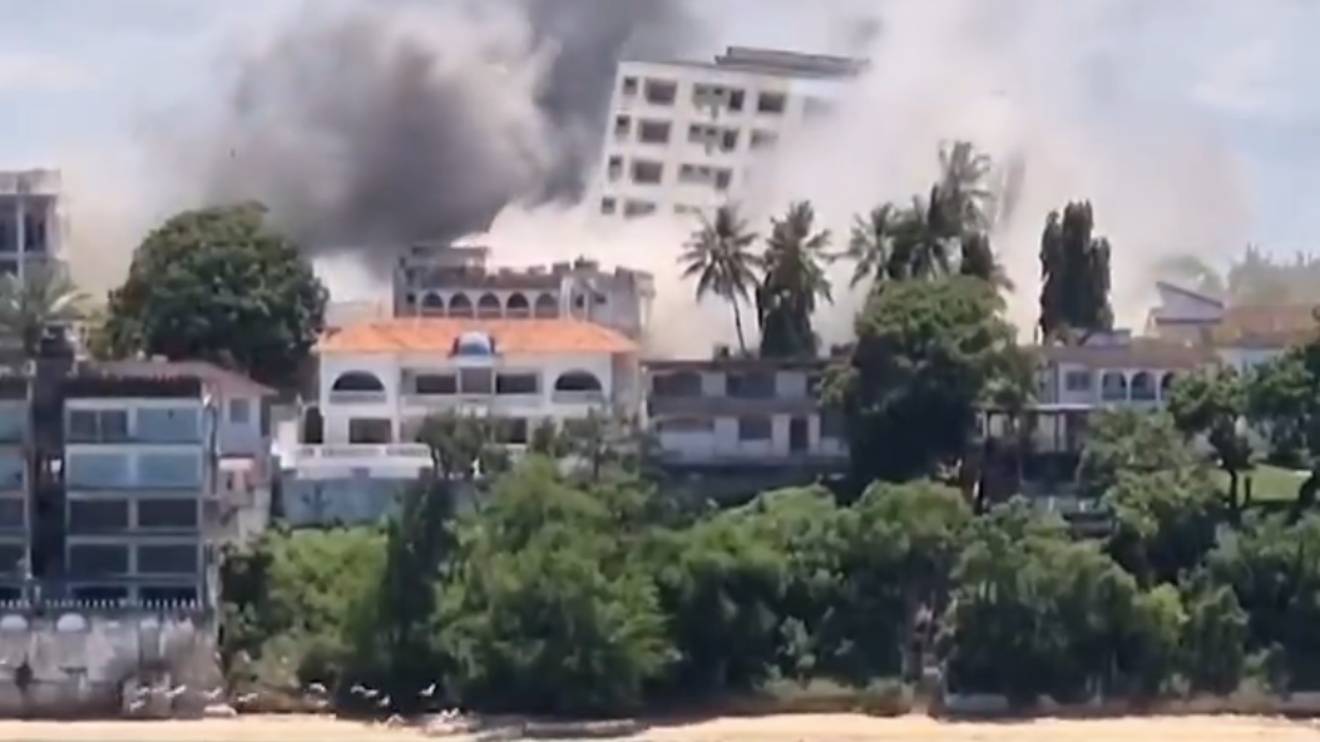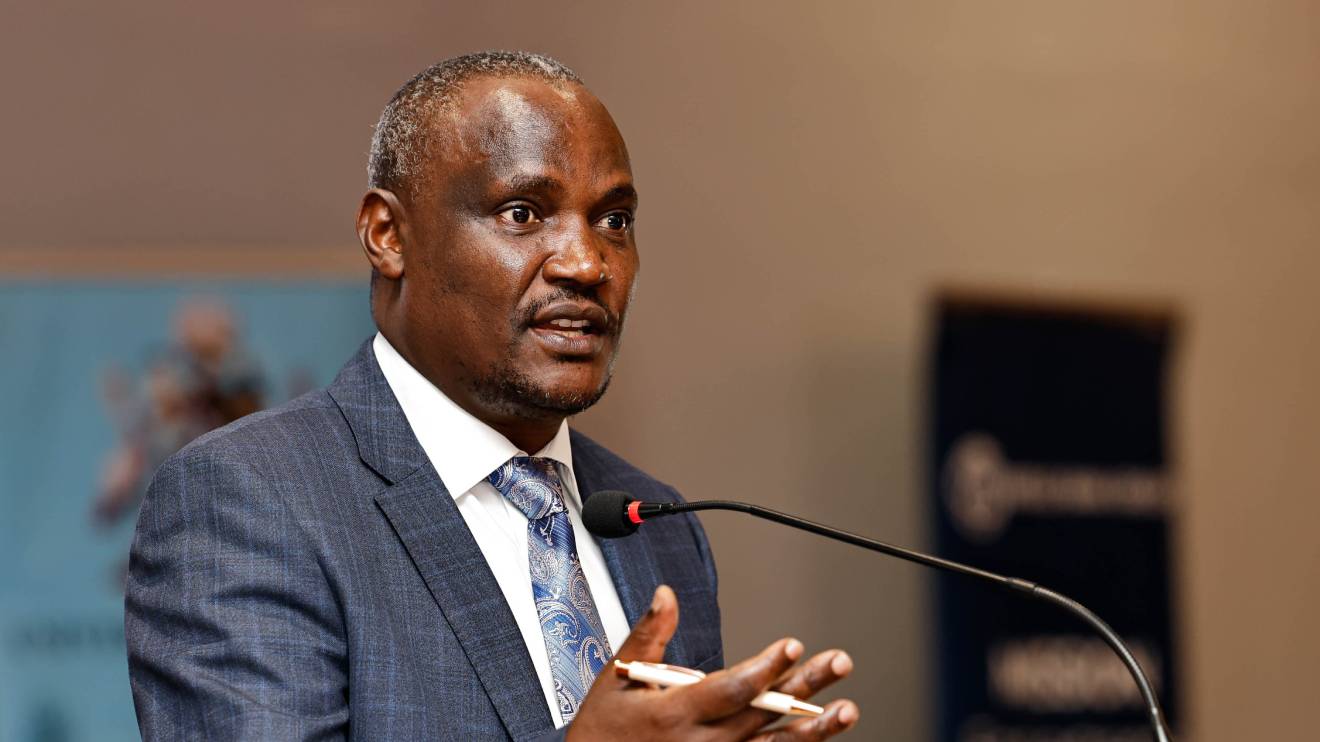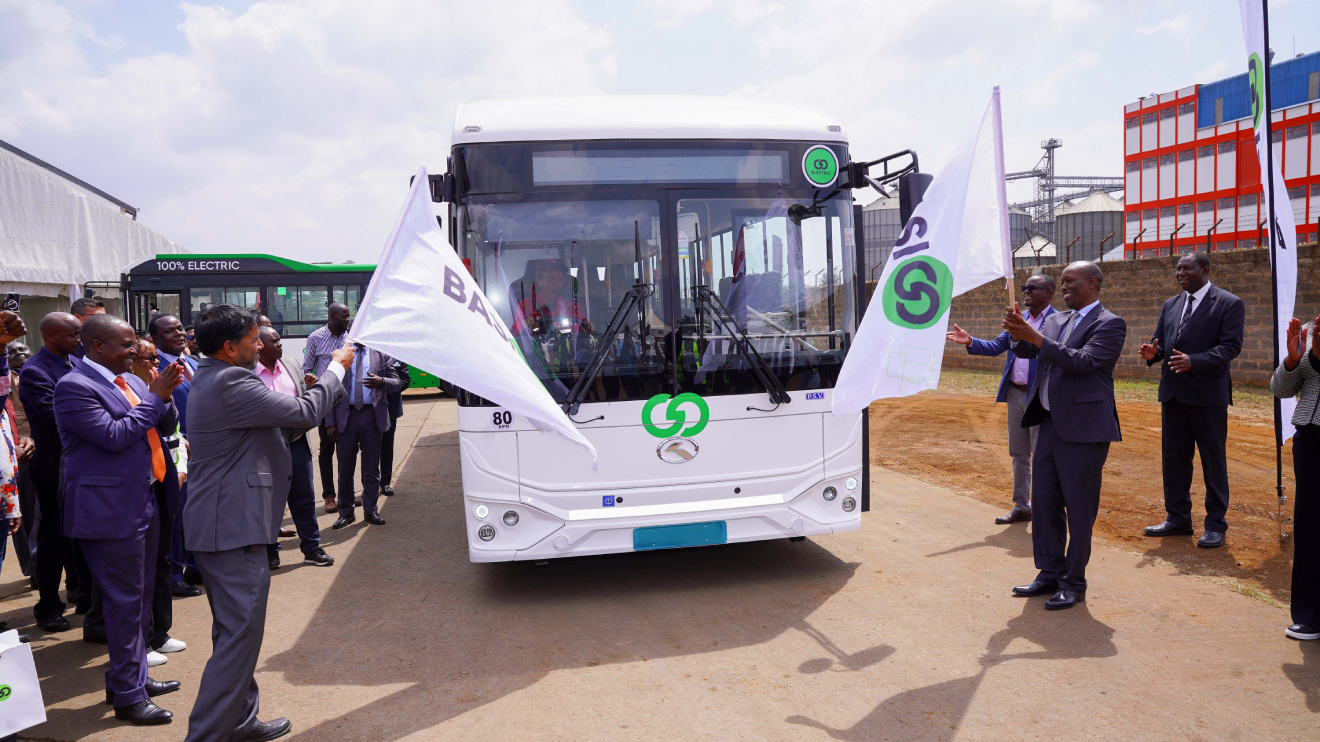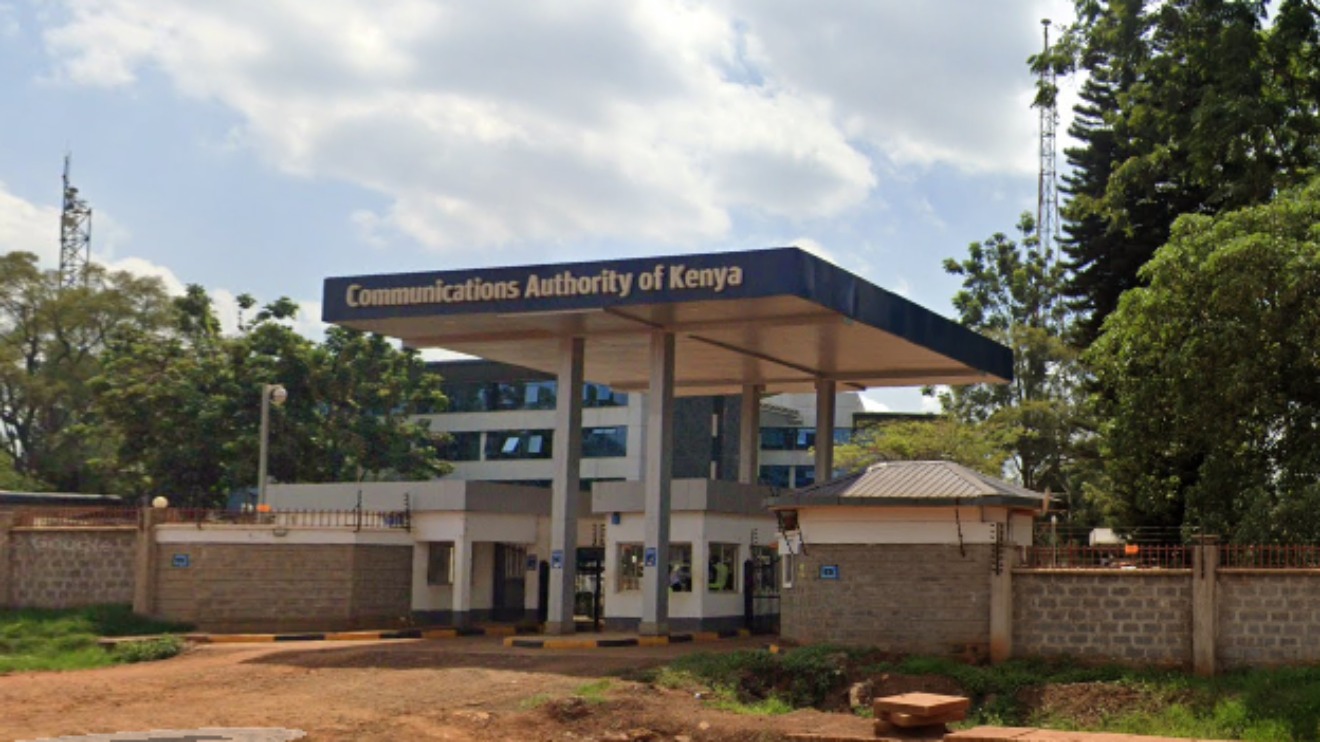A developer behind a condemned 11-storey building in Mombasa claims to have lost up to Sh350 million following the demolition by explosives of a building during a military-led exercise on Wednesday.
Unfortunately, the demolition exercise, designed to be controlled, also left surrounding residential and commercial premises with shattered windows, damaged floors, and fractured walls.
The building, located along Abdel Nasser Road, had been declared structurally unsound following weeks of heavy rainfall and the emergence of visible cracks.
The explosion, executed by the Kenya Defence Forces (KDF), was part of a high-level, multi-agency operation necessitated by safety fears as the structure had begun to slant and partially cave in.
Nearby buildings bore the brunt of the blast’s shockwave, with footage revealing extensive damage to adjacent properties—though the full extent remains unconfirmed.
Read More
Former Embakasi South MP Irshad Sumra, speaking on behalf of the developer, placed the building's investment between Sh300 million and Sh350 million and confirmed it had not been insured.
“The building was worth around Sh300 million to Sh350 million. There was no insurance, but luckily, no flat owner has been affected, as the plot owner used his money to pay,” he said.
Sumra said the developer financed the construction through a loan and now faces significant repayment burdens.
“He used his money, but that was a loan which he needs to repay, so pray for him. Yes, we have lost Sh300 million, but we thank God because money is not more important than people's lives. Buildings have fallen on people and they have passed on, but we thank God that did not happen here. We decided it was important just to demolish the building.”
He maintained that all structural requirements had been strictly observed during construction and that there had been no foul play, adding that the builder had received approval for four additional floors, expected to be completed by August.
“When we were told to put ballast of 600 millimetres, we have the certificate to show that we put it at 1,000 millimetres. When we were told to put Y20, we put Y25. Where we were told to put Y30, we put Y35,” he explained.
“There is nothing we are hiding. We got an approval for four more floors."
Mombasa Governor Abdulswamad Sherrif Nassir attributed the building’s failure to severe foundational compromise, including illegal borehole drilling that caused the collapse of ground-floor columns by up to three metres.
The County Government issued an immediate evacuation order for residents in surrounding areas.
“One floor has already caved in, including the basement of the building. Already the building is slanted, and if you closely observe, the structure did not go up with the right dimensions,” noted Mombasa County Fire and Disaster Chief Officer Ibrahim Basafar.
In preparation for the controlled explosion, Nassir directed a blanket evacuation within a 1.2-kilometre radius, including the temporary closure of schools and businesses.
Thousands of patients were evacuated from the Coastal General Hospital, and traffic was redirected as the Nyali Bridge was closed to secure the blast perimeter.
The demolition operation was overseen by the KDF, deployed under orders gazetted by Defence Cabinet Secretary Soipan Tuya.
National Police Service officers provided support to maintain public order and safety throughout the exercise.
As the dust settled, questions lingered not only about the building’s collapse but also about the ripple effect the demolition has had on Mombasa’s densely built-up neighbourhoods.
For now, the city counts the cost—both in currency and in concrete.








